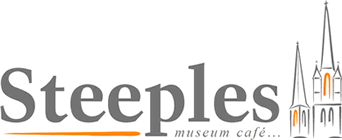Nenagh
In 2020, Nenagh celebrated Nenagh 800, celebrating 800 years of the development and history of the town of Nenagh. There are so many elements that make Nenagh what it is – its agricultural roots and market town, its heritage – both physical and cultural, but most of all its people.
Nenagh first became established as a walled, Norman town in the 13th Century, when Theobald FitzWalter, the founder of the Butler dynasty in Ireland, built a castle in the Nenagh area. The Butlers made the town their principle seat in their palatinate, but it was later moved, in the 14th Century, to Kilkenny.
Nenagh is the largest town in north Tipperary with an urban population of 7,995 and is part of the historical Barony of Ormond Lower which was the traditional territory of the O’Kennedy’s prior to the Norman invasion. This land was included in the grant made by King John of England to Theobald, eldest son of Hervey Walter of Lancashire, England. Theobald was subsequently appointed Chief Butler of Ireland. Nenagh Castle was built c1216 and was the main castle of the Butler family before they moved to Gowran, County Kilkenny in the 14th century.
Nenagh lies on the banks of the Nenagh River which empties into Lough Derg at Dromineer (nine kilometres to the north-west) which is a popular centre for sailing and water sports. The Silvermines Mountain range lies to the south of the town (highest peak Keeper Hill at 694 metres).
Nenagh Courthouse
Nenagh Courthouse, which is based in Banba Square, was built in 1843 to the design of Architect John B Keane.
Following a recent refurbishment the Courthouse makes for a spectacular sight and is adorned by the bronze sculptures of three local Olympic gold medallists.
Nenagh Heritage Centre
Nenagh Heritage Centre is a unique museum located in 19th century prison (Gaol) buildings.
Here you can learn about the history of these unique buildings, step back in time to experience old rural Ireland and follow in the footsteps of the condemned prisoners.
Nenagh Castle
Nenagh Castle was built by Theobald Walter (the first of the Butlers of Ormond) around 1200.
To this day the cylindrical keep adorns the town and like most keeps it formed part of the perimeter of the fortress. The walls have now almost disappeared, but fragments remain.
The Castle is open for visitors from April to October with some limited Winter hours.
Saint Mary of the Rosary Church
Adjacent to Steeples is Church of Saint Mary of the Rosary. This church, designed by Walter Doolin, is an excellent example of large scale Gothic Revival architecture of the late nineteenth century in Ireland.
The exterior is notable for the finely-carved ashlar dressings, gargoyles and elaborate west doorway. The interior of the nave revives the quatrefoil columns found in some thirteenth-century Irish and English west country Gothic parish churches and its columns and pointed arches are of Portland stone.
A series of fine mosaics executed by Oppenheim in 1911 culminate in the chancel of the church.
